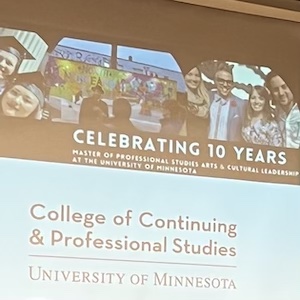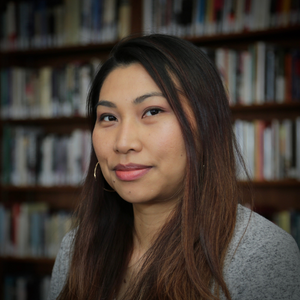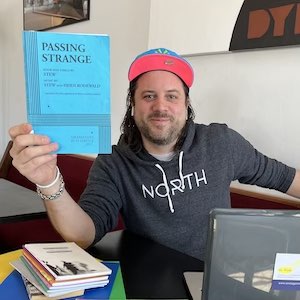Lann Briel
Lann Briel came to the Arts and Cultural Leadership program equipped with an impressive amount of video and film experience. After graduating from the College of Santa Fe's Moving Image Arts program in 1999, Briel landed a job in Minneapolis working on an HGTV show. She has worked in cable programming as an associate producer, coordinator, post-production producer, and camera operator.
From 2007−13, Briel ran a small business out of her home, creating video content for foundations and nonprofits and documenting grantee projects for Forecast Public Art's website.
During this time, she worked on two documentaries—Souvenirs: Healing After War, the story of a Vietnam veteran’s struggle with PTSD, and the PBS documentary Slavery by Another Name, which details the unfair practices that followed the Emancipation Proclamation that kept African-Americans in forced labor.
“I love the power of storytelling, I love the creativity involved," she says. "And I love working in teams that share a common goal of producing good work.”
Hands-on Learning
These experiences amplified her interest in studying how arts and cultural organizations effectively use media.
“It was at this point I started looking into a master’s degree. It was something I had always wanted to pursue. The ACL program seemed like a good fit for me, as I knew I wanted to continue to work in a nonprofit environment and focus on media engagement in the arts.”
Once admitted to the program, Briel delved into the core courses—which covered critical and cultural inquiry, trends in arts management, entrepreneurship, ethics, and leadership—and wrote several papers on how these issues intersected with her focus area: digital media and the arts.
"I knew I wanted to continue to work in a nonprofit environment and focus on media engagement in the arts.”
She later chose an evaluation minor to learn how to measure an institution’s media impact. She completed her internship at the Northern Clay Center and held graduate appointments with the Center for Urban and Regional Affairs (CURA) and the Minnesota Evaluation Studies Institute (MESI).
Sharing the Past, Shaping the Future
Currently, Briel is the coordinator for mnartists.org, an online platform that connects and profiles regional artists, curators, collectors, and venues to foster collaboration. Her position allows her to apply her arts, nonprofit, media, and evaluation knowledge to a highly visual, interactive program.
“I thoroughly enjoy working with local artists,” Briel says. An artist herself, she appreciates the mission of Mn Artists: to advance regional artists by connecting them to events and opportunities and to create cultural dialogue within the arts community.
“The arts and cultural scene here is thriving and vibrant,” she continues. “I think the Legacy Amendment* really helped... I feel like it's become more of a priority in both rural and urban communities to promote public art and artists, create community art centers, and develop partnerships among organizations.”
As an enrolled tribal member, she is especially interested in advocating for and advancing indigenous art and artisans throughout Minnesota and the larger art world. She is also intrigued by projects that “inform, not sway, people’s perception of culture and the environment, and enhance their political awareness.”
Her work at Mn Artists allows artists to forge valuable connections and have a virtual space to interact in and be heard—in other words, to tell their story.
Advice for Future Students
"Take advantage of the knowledge that is shared with you by the instructors: they have significant experience. Know what your own strengths are and grow those. If you do that you will come out of the program a better arts and cultural leader."
Update: Lann Briel is now program officer for the Jerome Foundation, an organization that supports emerging artists in Minnesota and New York through grants.
* The 2008 Clean Water, Land and Legacy Amendment created four funds, one of which is the Arts and Cultural Heritage Fund. The amendment mandates that a portion of the ACHF be used “to preserve Minnesota’s history and cultural heritage. (Minnesota Constitution, Article XI, Sec. 15)









